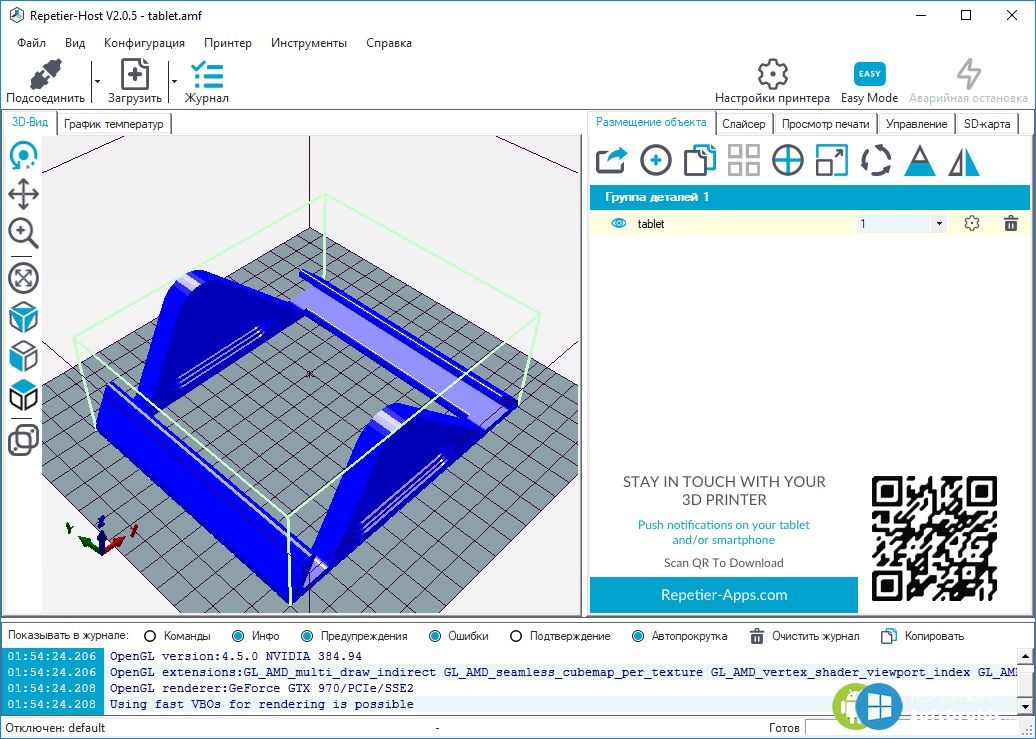
- Download slicer repetier install#
- Download slicer repetier portable#
- Download slicer repetier windows#
(Printer type and printer size, for example.) Registry information: Computer\HKEY_CURRENT_USER\Software\Repetier Other: Keeps configuration information in registry. This would also help people with 3D printers take the printer to a friend's house and show the technology without taking the computer along or messing up their friend's registry.ĭescription: Host controller for 3D printers.
Download slicer repetier portable#
Having this software portable will help students who take their printers between home and school.

Repetier-Host is a common software used to control these printers, but it assumes that it will be installed on a local machine rather than a portable drive. More on this in the next chapter.The following request would be helpful for those with open source 3D printers. If you see an error or want to kill the slicing process, you can stop it any time by pressing the “Kill slicing process” button.Īfter the slicing is done, the g-code is loaded into the host and a preview of the print is rendered. STL is only a collection of triangles that should define the outside of the object. Unfortunately, these files often contain more then the outer shell when they are exported. One easy way to correct these models it with netfabb cloud service. In most cases the problem is a non-manifold object description. Sometimes the slicer has problems with your model. If you can’t see the log, click on “Show log” or increase the log panel size. In your log you will see all output generated by the slicer. A small window showing the time will pop up. Hit the “Slice with …” button and slicing should start. Now that your hard work is done, it’s time for your computer to work. This will be used until you change your selection. Now activate the slicer you want to use and select the wanted slicing profile. HINT: Switching the active slicer also forces the host to reread the profiles. After you finished the program, the host will scan the directories for new profiles and show them. Define your profiles and make sure to save them. Click on the “Configure” button of the slicer and after some seconds the slicer should start. If they are empty, you need to create one with the slicing software. The slicer tab contains several drop down boxes, where you can select the profile to use when slicing. Now that we have setup the slicing software, we need some printing profiles.
Download slicer repetier windows#
The windows installer already installs and sets python and pypy. If you leave it empty, the python interpreter is used instead.

Download slicer repetier install#
For 3 to 4 times faster slicing times you should also install pypy and select the executable. Skeinforge is written in python and requires python 2.7 to run. You need to select the profiles subdirectory in it. Skeinforge creates this directory in your home directory with the name. If you haven’t started Skeinforge before, this directory will not exist. The profiles directory is, where Skeinforge stores the defined slicing profiles.

This directory defines where the profiles are stored. If you use SFACT instead of Skeinforge, you need to define a working directory. This is the program that does the slicing. The second one is the workhorse called skeinforge_craft.py. You will only use it to define your slicing profiles. It will show all profiles and also allows to slice objects. You will see a setup dialog like the one below.įor Skeinforge two programs are needed. Select the slicer tab and press on “Setup” in the “Skeinforge” group.

You need to select a slicer with version 0.9.0 or higher to work with the host. Leave all fields empty 🙂 Only if the host does not find the profiles or you want to use a different version, select the configuration directory or the slicer.


 0 kommentar(er)
0 kommentar(er)
